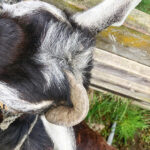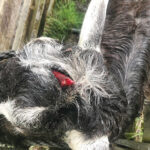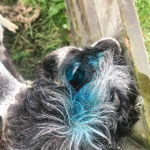Everything you need to know about goat horns
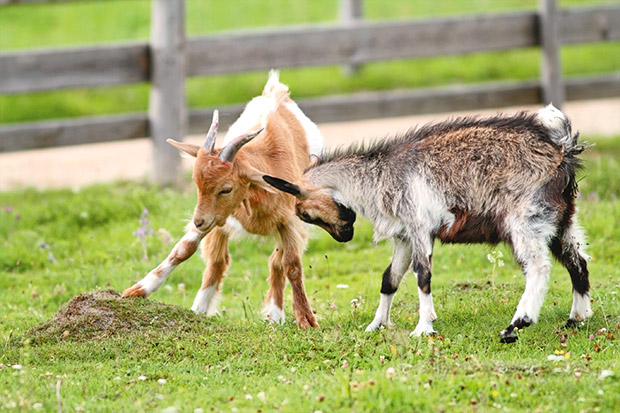
Some goats have horns, some have none, and some fall in between.
Words: Dr Sarah Clews, BVSc
DO GOATS NEED HORNS?
They use them in social interactions, most commonly as a form of defence, brandishing them like a shield when they feel threatened.
Occasionally, they’ll use them to establish dominance. They also use them when play fighting and to delicately scratch themselves.
Goats with larger, more symmetrical horns are likely to rank higher in the hierarchy, even if they rarely fight.
What surprises many people is the important role horns play in thermoregulation. Horns contain intricate networks of blood vessels that act as an air conditioning system, cooling the animal in hot weather. It’s crucial for Angora, which are more at risk of overheating in hot weather due to their thick fibre.
However, even a kind-natured horned goat can accidentally injure another animal, a child, or you.
Disbudding goat kids is widely accepted as necessary for safety, but scurs are a common complication of the procedure.
WHAT IS DISBUDDING?
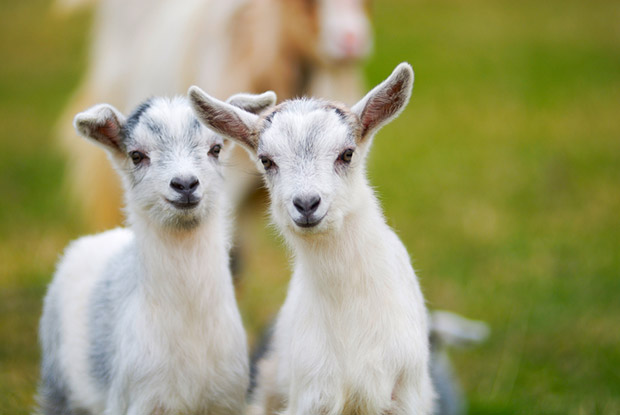
Disbudding is the destruction of the immature horn, a ring of cells on either side of the top of the head, also known as growth buds. In the first week or so of a goat’s life, the cells are free-floating in the skin on the skull, and it’s easy to destroy them, most commonly by pressing a hot iron onto the area for a few seconds.
For the best chances of success, kids should be disbudded when 2-7 days old before the cells start attaching to the skull.
Goat kids are the youngest animal a vet is ever likely to sedate. However, the risk of sedation in such a young animal is also high. Many vets wait until kids are 7-14 days and have started to develop their immune system, to try and mitigate the risk.
Another problem is goat kids have large growth buds compared to calves and a thin skull. You can’t burn the bud as long or as hard as you can with calves, or you risk causing thermal brain damage.
Poor operator technique or variations in horn formation in an individual goat can also lead to scur formation.
HOW TO MANAGE SCURS
Scurs are the unsightly strips of horn that grow from the surviving horn bud. They’re often not attached to the skull. They can be thin and flimsy or thick and sturdy.
Scurs can also cause pain. They’re easily damaged and may even tear off during a tussle with a herd mate or a fence.
The goat in the picture is Lolly, a six year old wether who belongs to former NZ Lifestyle Block editor Nadene Hall. His scur was thin and flimsy in his first few years and often bled if he butted heads with his herd mates. In recent years, it has grown much thicker and started to curl over towards his skull. If left, it would have eventually grown into the skin.
- Lolly’s scur was about a third the thickness of a normal horn, and was close to penetrating the skin.
- The base of the scur after cutting, with very little blood.
- Finished with a coating of antibiotic spray.
Lolly was put in a small pen, restrained, and given a local anaesthetic. The vet then used a sharp wire to cut the scur off as close as possible to the skull. The whole operation took a few minutes, and most of that time was waiting for the local anaesthetic to take effect – the actual cutting time was about 10 seconds. The vet then doused it with an antibiotic spray and injected Lolly with long-acting antibiotic and pain relief drugs.
Scurs almost always grow back, but growth slows the older a goat gets.
Depending on the thickness of the scur and nerve supply, the pain a goat feels in the scur varies. However, if they snap or tear it off close to the base and leave a raw stump, it’s very painful.
If this occurs, check the wound to make sure there’s no opening into the frontal sinus; if not and the wound is fresh, spray with disinfectant, keep it clean and dry, and ask your vet for a pain relief option.
If there’s a hole, call your vet.
CAN YOU DEHORN AN ADULT GOAT?
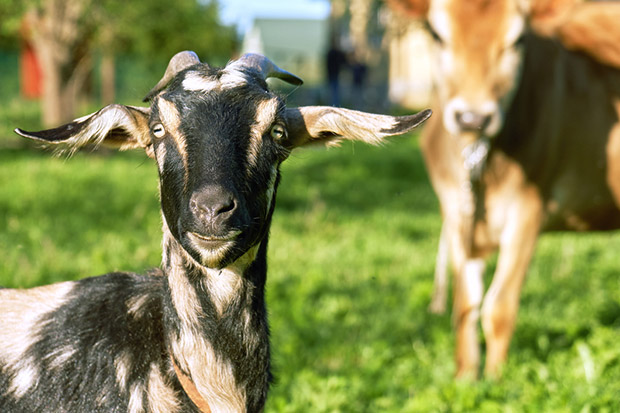
Removing the horns of mature goats, while possible, is not recommended.
Goats have a very large frontal sinus which extends a significant way up the horn. Even small horns can expose surprisingly large holes. If a goat has small horns, usually when it’s under a year old, the hole may be small enough to close over. In a mature animal, the vet may use a skin flap to cover them.
Either way, it’s crucial to bandage the wounds, keep the head clean and dry, and use antibiotics and pain relief, as the head will be tender for a month or more.
While the frontal sinus is open to the environment, the risk of bacterial sinusitis is very high. There’s the possibility of flystrike into the skull and occasionally through into the brain. I’ve seen a case like this, and it still haunts me.
Removing the horns also carries a high risk of haemorrhage and is a painful procedure.
Dehorning mature goats can also cause psychological issues, disrupting rank and relationships within a herd.
The psychological stress can manifest as reduced milk yield and impaired fertility.
WHAT THE LAW SAYS
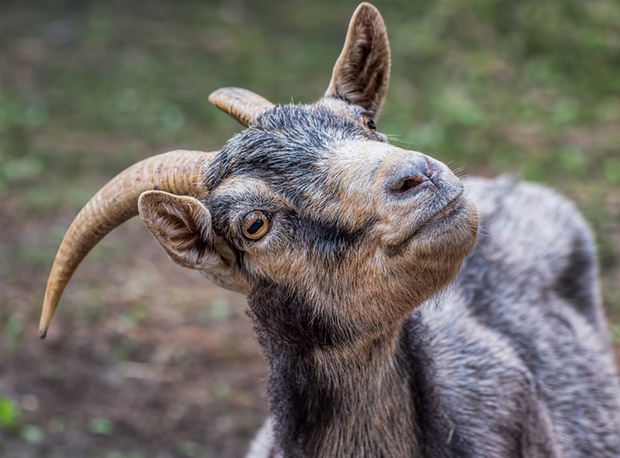
New animal welfare laws mean all dehorning and disbudding MUST be performed by someone using vet-prescribed pain relief.
‘Buds’ and horns are an extension of the skull and full of nerves. Disbudding young animals is significantly less painful than removing a horn but still agonising for the animal. Severe pain from disbudding lasts at least 4 hours. They may continue to feel discomfort while
the wound heals over a few weeks.
Common local anaesthetic only lasts for 60-90 minutes, but you may request a longer-acting course of pain relief from your vet.
There are fines for not complying ($300-$25,000), the risk of a court appearance, and being banned from caring for livestock.
WHAT ARE THE ALTERNATIVES?
If you’ve missed the window for disbudding and don’t want to dehorn, there are some ways to manage horny goats.
• ‘Tip’ the horns, which involves removing the ends so they’re blunt – done right, you avoid blood and nerve supply, and the risks involved in dehorning.
• Slide pool noodles over the ends. You can also get PVC or silicon horn covers to blunt the tips.
• Make your peace with cheeky goats butting heads, behind the safety of a locked gate. However, if a horned goat becomes a bully, especially to its dehorned herd mates, separate them. It may be best to keep horned and dehorned goats in separate groups.
• Don’t let children, dogs, or other pets play head-butting games with goats, even when kids are very young.
Love this story? Subscribe now!
 This article first appeared in NZ Lifestyle Block Magazine.
This article first appeared in NZ Lifestyle Block Magazine.
